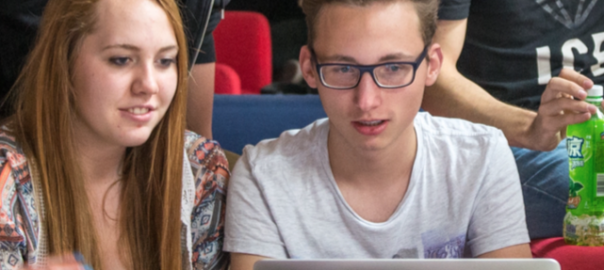Question what blended learning looks like for all of our students
Learning online to bolster what you learn in a classroom is not just the stuff of high school and university. We’re going to define what quality blended learning might look like for our most senior students and for our youngest learners.
Learning online is already a key part of high school life: “With the extended projects we do, no one is going to push you – you have to push yourself,” explains Derron Yu, in Grade 11. “It means that you have to use the library resources, content the school has bought in, online materials that are tailored to what we are trying to do. For my Personal Process Project I was able to go through proper university-level research papers, not just rely on Google.”
But learning online to bolster what you learn in a classroom is not just the stuff of high school and university. At Nanjing International School, we believe every learner, from Kindergarten through to University graduate, has something more to learn from beyond the classroom, through this blended learning. We’re going to define what K-12 blended learning might look like.
Shemo Gani and colleagues in Kindergarten and Primary School are beginning to look at blended learning for our youngest learners. “Our students have just started owning their iPads, so we’re get- ting to grips with how this might add value in the classroom, one step at a time. SeeSaw is a great app that we’re starting to use. It’s incredibly simple for the youngest of our learners to use, and it’ll help share more learning between school and the classroom.”
Traditional pen and paper, objects that help learners understand maths concepts, and outdoor exercise all remain a core part of what we do, but we want our youngest students and their parents to realise the potential of technology for connecting their learning in school, and between school and home.
Blended learning is already more common for older students, but Arden Tyoschin, Deputy Director, highlights how a more concentrated effort on a specific user need has improved learning in maths.
“We’ve created a prototype of a blended NIS mathematics course to help high school students with in-class learning alongside a mathematics teacher and a learning support teacher. The online learning element allows students to practise their own independent learning skills in maths, and work towards their more traditional high school maths leaving certificate.”
This work is licensed under a
Creative Commons Attribution, Non Commercial, ShareAlike 3.0 China Mainland License: http://creativecommons.org/licenses/by-nc-sa/3.0/cn/
First published in 2015 by NoTosh Publishing.
NoTosh and the notoshTM mark are Registered Trademarks.
